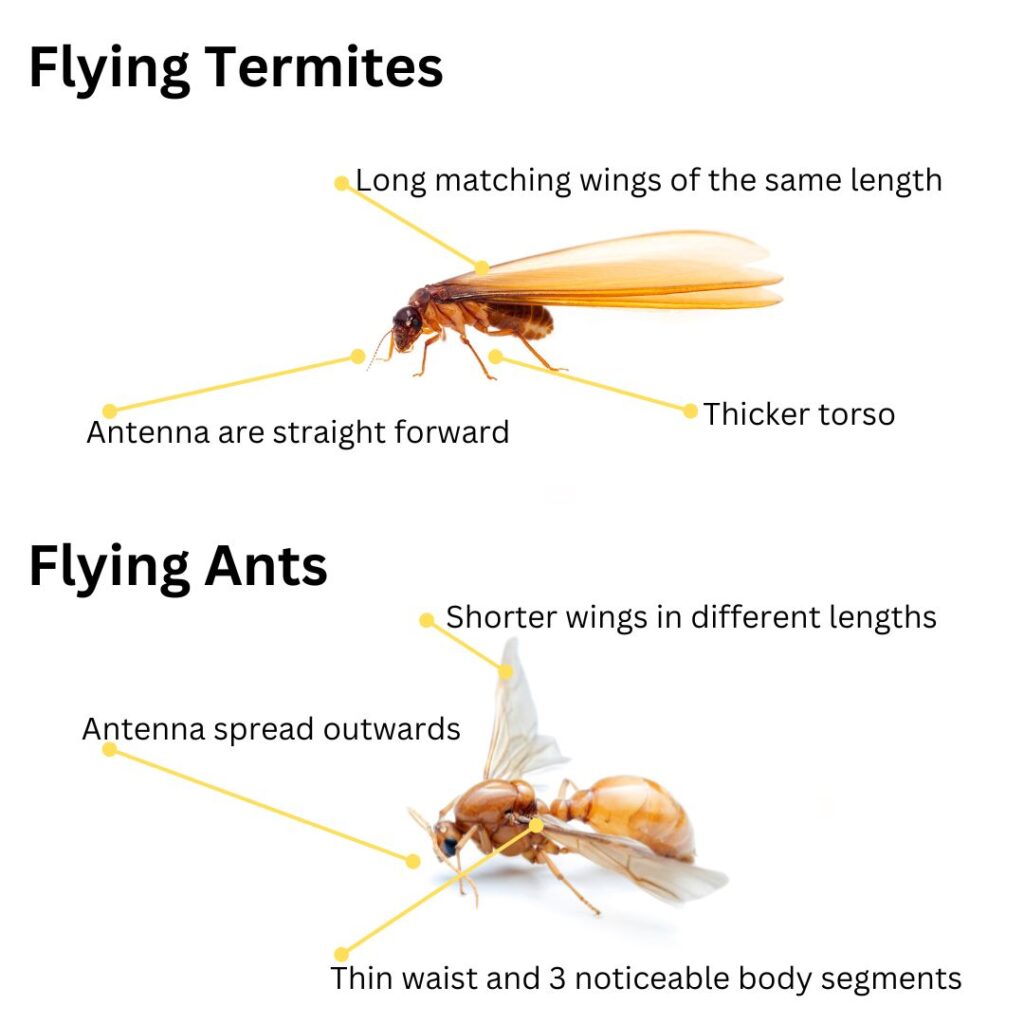Essential Insights into the Lifecycle and Behavior of Flying Termites
Flying termites, commonly referred to as “swarmers,” typically emerge when the seasons shift and humidity increases, with their presence most notable during the spring and early summer months. During the colder seasons, these pests remain hidden, quietly feeding on wood and expanding their colonies without detection. If you observe these swarmers inside your home, it's likely that termite activity has been occurring for several months, potentially leading to severe structural damage. Gaining a deeper understanding of their lifecycle and behavioral patterns is crucial for implementing effective termite management and preventive strategies, ultimately safeguarding your residential property from infestations.
The interplay between rising temperatures and subsequent rainfall often triggers massive swarms of termites, sometimes consisting of tens of thousands of flying individuals. While encountering such a large number of swarmers can be unsettling, the likelihood of these termites establishing a new colony nearby is relatively low. These swarmers are naturally drawn to light, which accounts for their frequent congregations around light fixtures in homes. By recognizing this behavior, you can maintain a calm demeanor and take proactive measures to protect your property from potential infestations.
The Hills District, known for its lush bushland, offers a perfect habitat that attracts termites. As you drive along Windsor Road towards Rouse Hill, you’ll notice numerous termite mounds scattered across the median strip. This serves as a vivid reminder that the surrounding bushland provides abundant food sources for these pests. Homeowners in this area should remain vigilant, as the closeness to these natural habitats significantly elevates the risk of termite infestations infiltrating residential properties. Understanding this risk is vital for effective pest control and prevention.
Effective Steps to Take Upon Discovering Flying Termites
Remain Calm! Your home may not be facing an immediate termite crisis!
Finding flying termites should trigger protective measures rather than panic or the hasty acquisition of expensive termite control systems. Here are several practical strategies you can adopt to ensure your home remains safeguarded against these pests:
- Schedule Routine Inspections: If it has been a while since your last professional termite inspection, now is the perfect time to set one up. Annual inspections by a licensed pest control technician are vital for early detection of potential termite issues, ultimately saving you from costly repairs down the line.
- Keep an Eye on Weather Patterns: Termites tend to swarm on warm, humid nights, making it common to spot them under these favorable conditions. Being attentive to the weather can help you predict their activity and prepare accordingly.
- Ensure Accurate Identification: Examine the swarmers closely—are their wings uniform in size? Are they flying in a distinct ‘swarm’ pattern or scattering erratically? Are their antennas straight or bent? Is their body shape consistent, or does it taper towards the waist? While flying ants and flying termites might look similar, their physical characteristics differ significantly, making accurate identification essential for effective management.

Critical Mistakes to Avoid When Addressing Flying Termite Issues
While your natural instinct may be to address the issue on your own, certain actions could complicate future treatments and worsen the problem:
- Do Not Spray: Although spraying swarmers may eliminate visible termites, it does not affect the underlying colony and could hinder effective future treatment strategies. It’s crucial to tackle the root cause rather than merely addressing the symptoms.
- Avoid Sealing Exit Points: If you observe termites emerging from a hole in your walls, do not seal these openings. Blocking their exit can force termites to burrow into new areas, possibly resulting in increased damage to your home.
- Do Not Disturb Mud Trails: If you come across mud tubes or trails, resist the urge to disturb them. Interfering with these structures can obstruct a technician’s assessment and compromise their treatment plan, ultimately exacerbating the situation.
Assessing the Termite Risk Level in Your Home
Seeing flying termites does not automatically indicate that your home is infested. However, it serves as a valuable reminder to remain proactive in your pest management efforts. An annual termite inspection by a qualified professional is your best defense against potential infestations, allowing for early detection and timely intervention. Although preventive measures may seem like an initial investment, the expenses associated with extensive termite treatment and subsequent repairs can be significantly higher than routine inspections.
Proven Strategies for Effective Termite Protection in Your Home
Committing to regular annual termite inspections forms the backbone of an effective pest control strategy. Additionally, following the recommendations provided by your pest control technician for future prevention can further strengthen your protective measures, which may include:
- Timely refills of your reticulation system to ensure ongoing protection against potential infestations.
- For homes equipped with baiting systems, arrange for regular monitoring with your technician to maintain optimal effectiveness and prompt adjustments.
- If your property lacks a termite barrier, consider investing in one to significantly enhance your defense against potential infestations.
Urgent Action Required: When to Start Your Termite Treatment Journey
There is no inappropriate time to start implementing preventive measures; however, it’s essential not to wait until you observe swarmers to take action. The appearance of flying termites may indicate pre-existing hidden damage to your property. Initiating preventative steps now can help fortify your home year-round, ensuring peace of mind and protecting your investment.
At So Pest Off, we are committed to empowering you with informed, proactive choices regarding termite protection while steering clear of scare tactics.
Contact us for reliable inspections and effective, transparent solutions tailored to your needs.
The post Flying Termites: Explore This Essential Action Plan appeared first on https://writebuff.com.
The Article Flying Termites: Your Essential Action Plan for Control Was Found On https://limitsofstrategy.com




Comments are closed